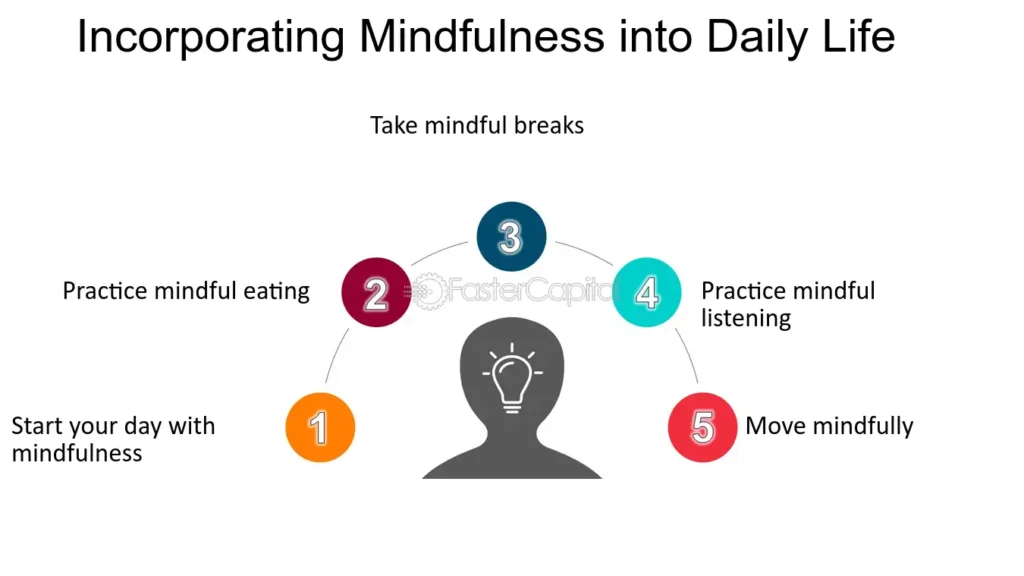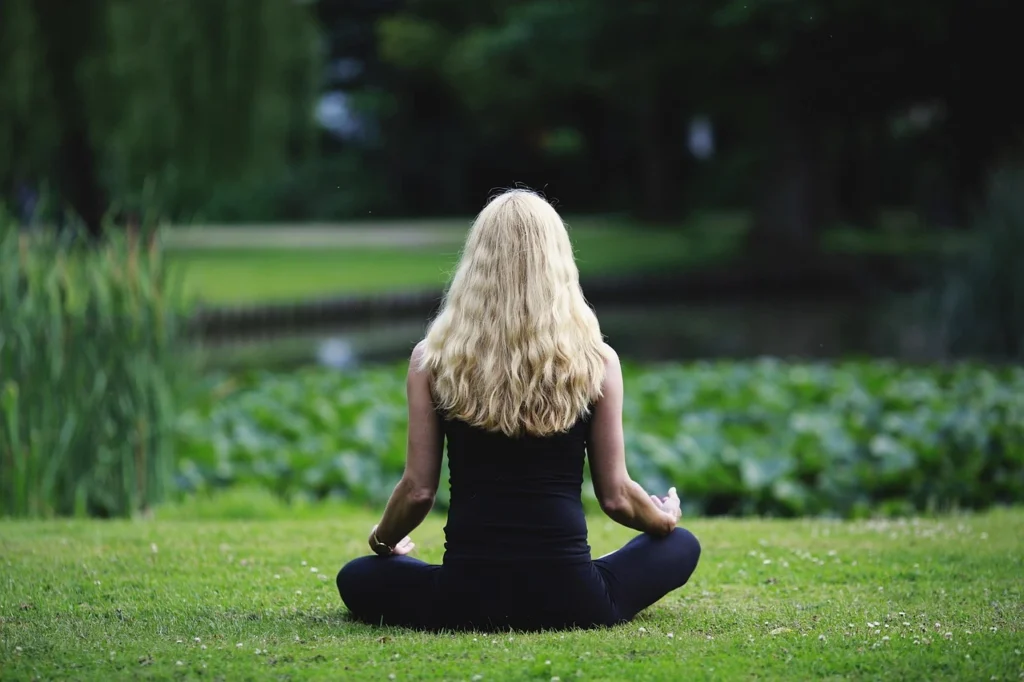Basics of Mindfulness is the practice of being fully present and aware in the moment. It can be integrated into daily tasks like eating, walking, or breathing.
By focusing on the present moment without judgment, individuals can cultivate mindfulness and reduce stress in their lives. This practice encourages a deeper connection with oneself and the world around us. Practicing mindfulness regularly can lead to improved mental clarity, emotional well-being, and overall quality of life.
Mindfulness is not about changing who we are but rather about accepting and embracing the present moment with openness and curiosity. Integrating mindfulness into everyday activities can enhance our experiences and bring a sense of peace and balance to our lives.
Introduction To Mindfulness
Mindfulness is the practice of being fully present and engaged in the current moment, without judgment or distraction. It involves focusing on your thoughts, feelings, bodily sensations, and the surrounding environment. This state of heightened awareness can be cultivated through various techniques and can greatly enhance one’s overall well-being.
The Zen Approach To Life
The Zen philosophy emphasizes the importance of mindfulness in daily living. It encourages individuals to embrace the present moment and appreciate the beauty of simplicity. By incorporating Zen principles into their lifestyle, individuals can experience a profound sense of peace and fulfillment.
Benefits Of Mindful Living
Practicing mindfulness offers numerous benefits, including reduced stress and anxiety, improved mental clarity, enhanced emotional resilience, and greater self-awareness. It can also lead to better concentration, heightened creativity, and improved relationships with others. By integrating mindfulness into their daily routines, individuals can experience a profound transformation in their overall quality of life.

Credit: www.mindful.org
Historical Roots Of Mindfulness
The historical roots of mindfulness can be traced back to ancient Buddhist traditions. Mindfulness is the practice of being fully present and aware of one’s thoughts, feelings, and sensations in the present moment. It can be incorporated into everyday activities to cultivate a sense of calm and clarity.
From Ancient Practices To Modern Times
Mindfulness is a concept that has been around for thousands of years. It has its roots in various ancient Eastern spiritual traditions, particularly Buddhism. In these traditions, mindfulness was used as a way to cultivate awareness and attention, helping individuals to become more present and connected to the world around them. Today, mindfulness practices have become increasingly popular in the West, with many people turning to mindfulness as a way to manage stress, anxiety, and other mental health issues.
Influential Mindfulness Movements
Over the past few decades, several influential mindfulness movements have emerged, each with its unique approach to mindfulness practice. One of the most well-known of these movements is Mindfulness-Based Stress Reduction (MBSR), which was developed by Jon Kabat-Zinn in the 1970s. MBSR combines mindfulness meditation with gentle yoga and other mind-body practices and is effective in reducing symptoms of anxiety, depression, and chronic pain.
Another influential mindfulness movement is Mindfulness-Based Cognitive Therapy (MBCT), which was developed by Zindel Segal, Mark Williams, and John Teasdale in the 1990s. MBCT combines mindfulness meditation with cognitive-behavioral therapy (CBT) techniques and is effective in preventing relapse in individuals with depression.
Overall, the historical roots of mindfulness trace back to ancient Eastern spiritual traditions, and today, mindfulness practices have become increasingly popular in the West. With the emergence of influential mindfulness movements like MBSR and MBCT, mindfulness has become a widely recognized and effective tool for managing stress, anxiety, and other mental health issues.
Core Principles Of Mindfulness
Mindfulness is the practice of being fully present in the moment, cultivating awareness and non-judgment. It can be incorporated into everyday activities such as eating, walking, or even washing dishes. By focusing on the present moment, mindfulness helps reduce stress and enhance overall well-being.
Presence In The Moment
In the practice of mindfulness, presence in the moment is a core principle that emphasizes the importance of being fully engaged and aware of the present experience. It involves consciously directing your attention to the here and now, without getting caught up in thoughts about the past or worries about the future. By cultivating this awareness, you can develop a deeper understanding of your thoughts, emotions, and sensations, allowing you to respond to them more skillfully and compassionately.
Acceptance Without Judgment
Another fundamental principle of mindfulness is acceptance without judgment. This involves acknowledging and accepting the present moment as it is, without trying to change it or judge it as good or bad. It means observing your thoughts, feelings, and sensations without attaching any labels or evaluations to them. By practicing acceptance, you can cultivate a sense of non-reactivity and non-attachment, which can help reduce stress, anxiety, and suffering.
Presence In The Moment
In the practice of mindfulness, presence in the moment is a core principle that emphasizes the importance of being fully engaged and aware of the present experience. It involves consciously directing your attention to the here and now, without getting caught up in thoughts about the past or worries about the future. By cultivating this awareness, you can develop a deeper understanding of your thoughts, emotions, and sensations, allowing you to respond to them more skillfully and compassionately.
Acceptance Without Judgment
Another fundamental principle of mindfulness is acceptance without judgment. This involves acknowledging and accepting the present moment as it is, without trying to change it or judge it as good or bad. It means observing your thoughts, feelings, and sensations without attaching any labels or evaluations to them. By practicing acceptance, you can cultivate a sense of non-reactivity and non-attachment, which can help reduce stress, anxiety, and suffering.
Mindfulness In Daily Activities
Practicing mindfulness doesn’t have to be limited to meditation sessions or designated moments of stillness. It can be incorporated into our daily activities, allowing us to cultivate a greater sense of presence and awareness in everything we do. By bringing our attention to the present moment, we can enhance our overall well-being and find greater joy in the simple pleasures of life. Let’s explore how mindfulness can be applied to two common daily activities: eating and commuting.
Eating With Awareness
Eating is not just a basic necessity; it can also be an opportunity for mindfulness. By eating with awareness, we can savor each bite, fully engage our senses, and develop a healthier relationship with food. Here are a few ways to practice mindfulness while eating:
- Slow down: Take your time to chew and savor each mouthful. This allows you to fully experience the flavors and textures of your food.
- Engage your senses: Pay attention to the colors, smells, and sounds of your meal. Notice the different tastes and textures as you eat.
- Be present: Avoid distractions such as screens or multitasking. Instead, focus your attention solely on the act of eating.
- Express gratitude: Take a moment to appreciate the food on your plate and the effort that went into preparing it. Cultivate a sense of gratitude for the nourishment it provides.
Mindful Commuting
Commuting to work or going about our daily travels is often seen as a mundane and stressful task. However, with a mindful approach, even these moments can become opportunities for peace and presence. Here are a few ways to practice mindfulness during your commute:
- Observe your surroundings: Notice the sights, sounds, and smells around you. Allow yourself to be fully present in the present moment.
- Focus on your breath: Use your breath as an anchor to bring your attention back to the present. Take deep breaths and let go of any tension or stress.
- Practice gratitude: Instead of getting caught up in negative thoughts or frustrations, shift your focus to gratitude. Express appreciation for the ability to commute, the transportation options available, or the opportunity to listen to your favorite music or podcasts.
- Engage your senses: Pay attention to the physical sensations of commuting, such as the feeling of the steering wheel in your hands or the vibrations of public transportation. By grounding yourself in your senses, you can cultivate a greater sense of presence.
By incorporating mindfulness into our daily activities, we can transform ordinary moments into opportunities for self-awareness and inner peace. Whether we’re eating, commuting, or engaging in any other task, practicing mindfulness allows us to fully experience the present moment and find greater fulfillment in our lives.
Meditation And Mindfulness
Meditation Techniques For Beginners
For beginners, meditation can seem daunting, but it doesn’t have to be. Start with simple techniques like focused breathing, body scan, or loving-kindness meditation. Sit or lie down comfortably, close your eyes, and focus on your breath. If your mind wanders, gently bring your focus back. This simple practice can help you ease into a more mindful state.
Incorporating Meditation Into Daily Life
Integrating meditation into your daily routine doesn’t have to be time-consuming. You can start with just a few minutes each day and gradually increase the duration. Find a quiet space, set a specific time, and make it a habit. Whether it’s in the morning, during a lunch break, or before bed, carving out this time for meditation can foster a sense of calm and clarity throughout your day.
Mindful Movement Practices
Mindfulness is the practice of being fully present and aware of the current moment. Mindful movement practices involve incorporating this concept into physical activities such as yoga, tai chi, and walking. By focusing on the sensations and movements of the body, individuals can improve their overall well-being and reduce stress.
Yoga As A Path To Mindfulness
Yoga combines movement with breath, promoting presence and relaxation.
Walking Meditation
Focus on each step, connecting with the present moment.
Mindful Movement Practices involve Yoga and Walking Meditation. Yoga is a Path to Mindfulness, combining breath and movement. In Walking Meditation, focus on each step for presence.
Overcoming Common Challenges
Mindfulness involves being fully present in the moment, focusing on breathing and sensations. It can be practiced during routine activities, such as eating or walking, to alleviate stress and improve overall well-being. By embracing mindfulness, individuals can overcome common challenges and lead a more balanced life.
Dealing With Distractions
Mindfulness can be interrupted by distractions. To combat this, focus on your breath or body sensations.
Building A Consistent Practice
Consistency is key in mindfulness. Set a routine for practice to make it a habit.
Advanced Mindfulness Strategies
Mindfulness can be taken to a deeper level through advanced strategies that enhance its impact on well-being. Let’s explore two key areas: Deepening Mindfulness Through Retreats and Integrative Mindfulness and Psychotherapy.
Deepening Mindfulness Through Retreats
Retreats offer an immersive experience to deepen mindfulness practice. They provide a dedicated environment for focused meditation and self-reflection.
Integrative Mindfulness And Psychotherapy
Combining mindfulness with psychotherapy can enhance mental health outcomes. Integrative approaches help individuals address underlying issues through self-awareness and compassion.
Tools And Resources
Exploring mindfulness can be made easier with the help of various tools and resources. Incorporating mindfulness into daily life can greatly benefit overall well-being. Let’s delve into some essential tools and resources for mindfulness practice.
Apps And Books For Mindfulness
- Headspace: A popular app for guided meditation and mindfulness exercises.
- Calm: Offers meditation sessions, sleep stories, and relaxation techniques.
- The Miracle of Mindfulness by Thich Nhat Hanh: A classic book on mindfulness practices.
- Wherever You Go, There You Are by Jon Kabat-Zinn: An insightful guide on mindfulness in everyday life.
Community And Online Support
- Mindful: A website offering articles, resources, and online courses on mindfulness.
- Insight Timer Community: Connect with a global community for meditation and mindfulness support.
- r/Mindfulness on Reddit: Engage in discussions and share experiences with like-minded individuals.

Transforming Life With Mindfulness
Mindfulness is a powerful practice that can profoundly transform your life by helping you become more present and aware in every moment. By cultivating mindfulness, you can enhance your personal growth, create a more harmonious environment at home and work, and unlock a deeper sense of self-discovery.
Personal Growth And Self-discovery
Mindfulness fosters personal growth and self-discovery by encouraging individuals to become more attuned to their thoughts, emotions, and behaviors. This heightened awareness enables individuals to gain insight into their inner workings, leading to greater self-understanding and the ability to navigate life’s challenges with clarity and resilience.
Creating A Mindful Environment At Home And Work
Practicing mindfulness can help create a more mindful environment at home and work by promoting communication, collaboration, and emotional well-being. By cultivating a culture of mindfulness, families can foster deeper connections, while organizations can enhance employee satisfaction and productivity.

Credit: fastercapital.com
Frequently Asked Questions
What Is Mindfulness And Why Is It Important?
Mindfulness is the practice of being present and aware of the current moment. It helps reduce stress, improve focus, and enhance overall well-being. By cultivating mindfulness, individuals can develop a greater sense of clarity and emotional balance in their daily lives.
How Can Mindfulness Be Integrated Into Daily Routines?
Mindfulness can be incorporated into daily activities such as eating, walking, and even mundane tasks like washing dishes. By focusing on the sensations and experiences of the present moment, individuals can infuse mindfulness into their routines and elevate their level of awareness and appreciation.
What Are The Benefits Of Practicing Mindfulness?
Practicing mindfulness offers a wide range of benefits, including stress reduction, improved mental clarity, enhanced emotional regulation, and increased resilience. It can also lead to better relationships, heightened creativity, and a greater sense of overall contentment and fulfillment in life.
Judgment
Mindfulness is about being present in the moment and fully aware of your thoughts, feelings, and surroundings. It involves paying attention to your breath, body sensations, and emotions without judgment or distraction. By practicing mindfulness in everyday activities like eating, walking, or listening, you can reduce stress, improve focus, and enhance overall well-being.
With dedication and patience, anyone can cultivate mindfulness skills and experience the benefits of living in the present moment.


